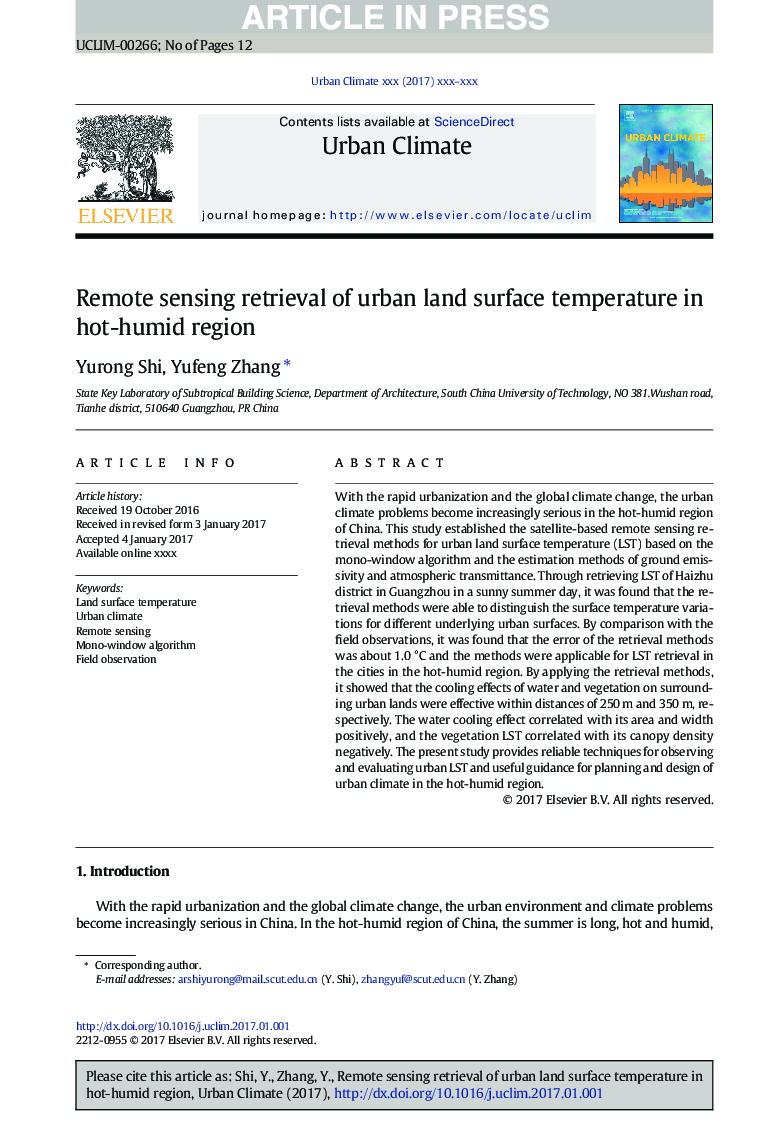| Article ID | Journal | Published Year | Pages | File Type |
|---|---|---|---|---|
| 6576871 | Urban Climate | 2018 | 12 Pages |
Abstract
With the rapid urbanization and the global climate change, the urban climate problems become increasingly serious in the hot-humid region of China. This study established the satellite-based remote sensing retrieval methods for urban land surface temperature (LST) based on the mono-window algorithm and the estimation methods of ground emissivity and atmospheric transmittance. Through retrieving LST of Haizhu district in Guangzhou in a sunny summer day, it was found that the retrieval methods were able to distinguish the surface temperature variations for different underlying urban surfaces. By comparison with the field observations, it was found that the error of the retrieval methods was about 1.0 °C and the methods were applicable for LST retrieval in the cities in the hot-humid region. By applying the retrieval methods, it showed that the cooling effects of water and vegetation on surrounding urban lands were effective within distances of 250 m and 350 m, respectively. The water cooling effect correlated with its area and width positively, and the vegetation LST correlated with its canopy density negatively. The present study provides reliable techniques for observing and evaluating urban LST and useful guidance for planning and design of urban climate in the hot-humid region.
Related Topics
Physical Sciences and Engineering
Earth and Planetary Sciences
Earth and Planetary Sciences (General)
Authors
Yurong Shi, Yufeng Zhang,
